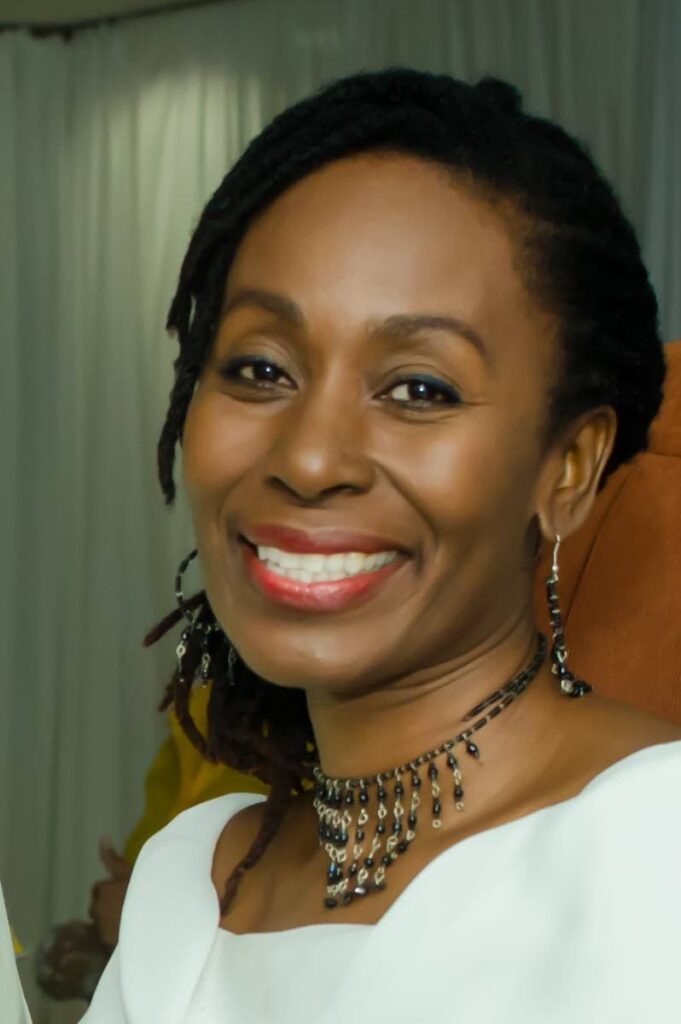Theatre of the mas

Culture Matters
Dara Healy
Early J'Ouvert morning
The mantle still have to take up
The powder still have to fly
And the paint still will have to spray up
The sweat still will have to sweat
But there won’t be a crowd to break up
Even if is me alone
Carnival never stop – Bunji Garlin, All House is Road
SO IT SEEMS we have to go right back to the yard. Where it all started, to the theatre of the road, to the barrack-yard.
Amidst the stillness of the music trucks, perhaps we will once again grasp the opportunity to hear the mas, listen to it, feel it, perform it. Remember when the river ran red, when white fabric in the Carnival band was stained with the trauma of a nation?
Did you see when a lone masquerader poured red paint on her nightie, mimicking the blood of the so-called vulgar pis-en-lit portrayal? This was her way of playing mas to say, "Stop beating our women."
During Kambule, did you laugh at Baby Doll when she pleaded for money to mind her child? Or did you laugh, slightly ashamed because the performance reminded you of the many who struggle to put food in their children’s bellies?
Like the characters in Samuel Beckett’s Waiting for Godot, cultural practitioners waited for the announcement of what kind of festival we would have. Typical of a "theatre of the absurd" play, the talks went round and round, resolving little, leaving many disturbed.
Some artistes lamented they were not sure who was speaking to whom, on behalf of whom and to achieve what. Others said they were forced to sell personal possessions to survive.
In 2022, no parade, no fetes, only concerts and theatre of the mas. So we will go back to the yard, to the rawness of the earth and, maybe, to the potential for building our communities through Carnival.
But there is a difference between Carnival and mas.
I learned this from the elders who understood it centuries before I could. Tony Hall explained that some of us play mas, something that is intrinsic to our soul; others play Carnival. Peter Minshall showed us the mas, how it celebrates not just the body, but our humanity. Lloyd Best envisaged panyards not only as centres for music, but as places which could nurture and inspire entrepreneurship.
“…suppose one day yuh had a son. Wouldn’t it be nice? If yuh was ah inspector, instead of just an ole trolley-bus driver? If I ever had a son Rosa, I would never want him to feel shame fuh his ole man…” Errol Hill’s Moon on a Rainbow Shawl was one of the first plays to depict the complexities of barrack-yard life.
For Ephraim, there was the added tension of wanting to assert his manhood and offer Rosa a better quality of life. But the yard was also the centre of creativity; in a deep sense, it was home.
In the immediate post-war period and prior to independence, Caribbean playwrights, writers and performance artists grappled with such notions of identity and finding one’s place in society.
To express these complex issues they sought understanding through creative vehicles such as dance, poetry, theatre and of course, the mas.
Over the past weeks, as I listened to members of the artistic community almost plead for clarity, I wondered, do we truly have an arts and entertainment industry, or, rather, a collection of different interest groups engaging in their own specific quest to be heard?
How can we free ourselves of this absurd ritual of waiting, hoping, receiving something and starting again? Who speaks for us?
Then it occurred to me that the voices of our traditional masqueraders are frighteningly silent.
To answer these questions, the understanding of Carnival must change. This is at the core. If the people who are responsible saw the festival as integral to what Eintou Springer calls our "personhood," then it would not be so difficult to decide.
For instance, artistes should not have to be against the ropes for rehearsal and performance spaces to be made available. The pandemic should allow us to see the possibilities, not shroud us in uncertainty.
We are grateful that a decision has been made, but we must move beyond Carnival as a highly profitable, annual festival. Instead, it is what Best called “…the central and legitimating rite of the culture.” This is our belly, this is our theatre of the mas.
Dara E. Healy is a performance artist and founder of the Indigenous Creative Arts Network – ICAN.


Comments
"Theatre of the mas"